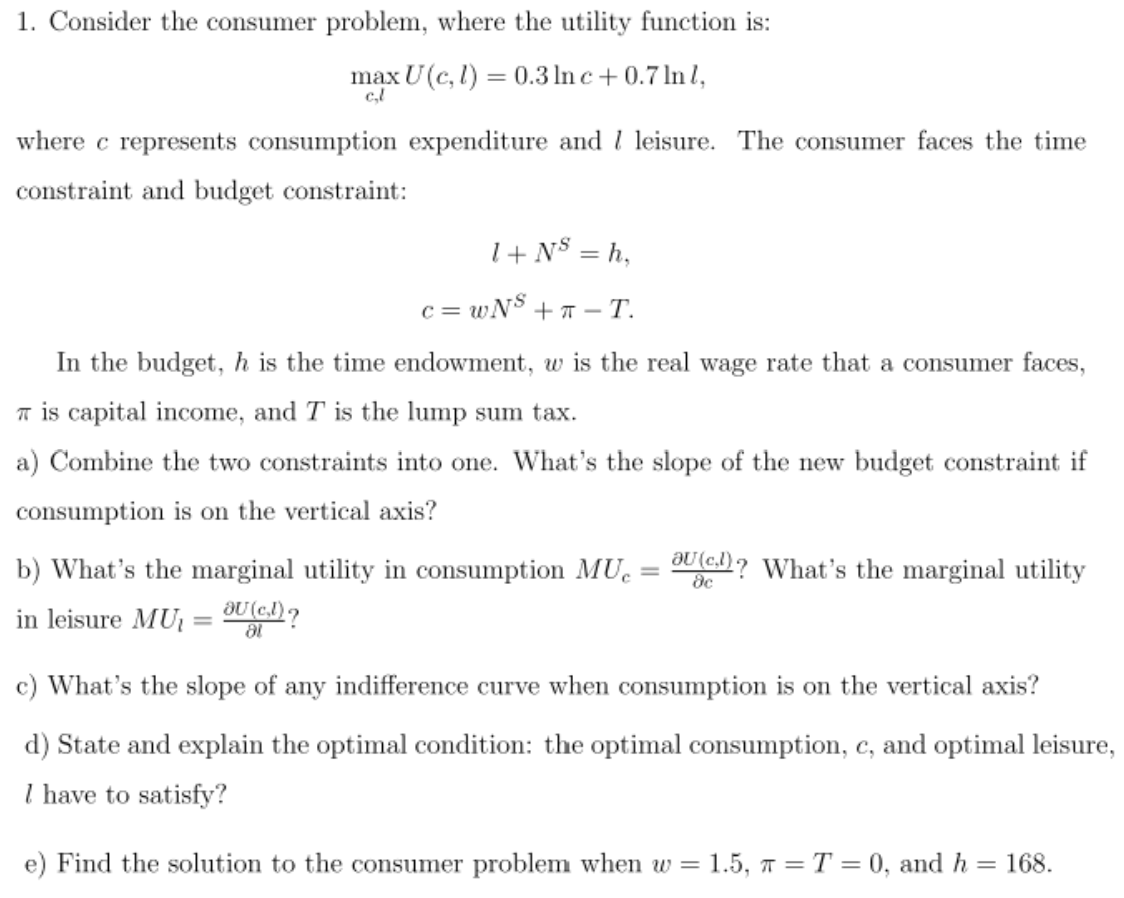Answered step by step
Verified Expert Solution
Question
1 Approved Answer
1. Consider the consumer problem, where the utility function is: max U(c, l) = 0.3 In c + 0.7 ln l, where c represents

1. Consider the consumer problem, where the utility function is: max U(c, l) = 0.3 In c + 0.7 ln l, where c represents consumption expenditure and I leisure. The consumer faces the time constraint and budget constraint: 1+ N$ = h, c = wNS + T - T. In the budget, h is the time endowment, w is the real wage rate that a consumer faces, T is capital income, and T is the lump sum tax. a) Combine the two constraints into one. What's the slope of the new budget constraint if consumption is on the vertical axis? b) What's the marginal utility in consumption MU. = 00e)? What's the marginal utility in leisure MU = 00(c)? c) What's the slope of any indifference curve when consumption is on the vertical axis? d) State and explain the optimal condition: the optimal consumption, c, and optimal leisure, I have to satisfy? e) Find the solution to the consumer problem when w = 1.5, 7 = T = 0, and h = 168.
Step by Step Solution
★★★★★
3.46 Rating (153 Votes )
There are 3 Steps involved in it
Step: 1
6 a HNS C WNS T 3D put NS he the n C wheT Combined BC slope dc de W b MUC u 3 M...
Get Instant Access to Expert-Tailored Solutions
See step-by-step solutions with expert insights and AI powered tools for academic success
Step: 2

Step: 3

Ace Your Homework with AI
Get the answers you need in no time with our AI-driven, step-by-step assistance
Get Started


